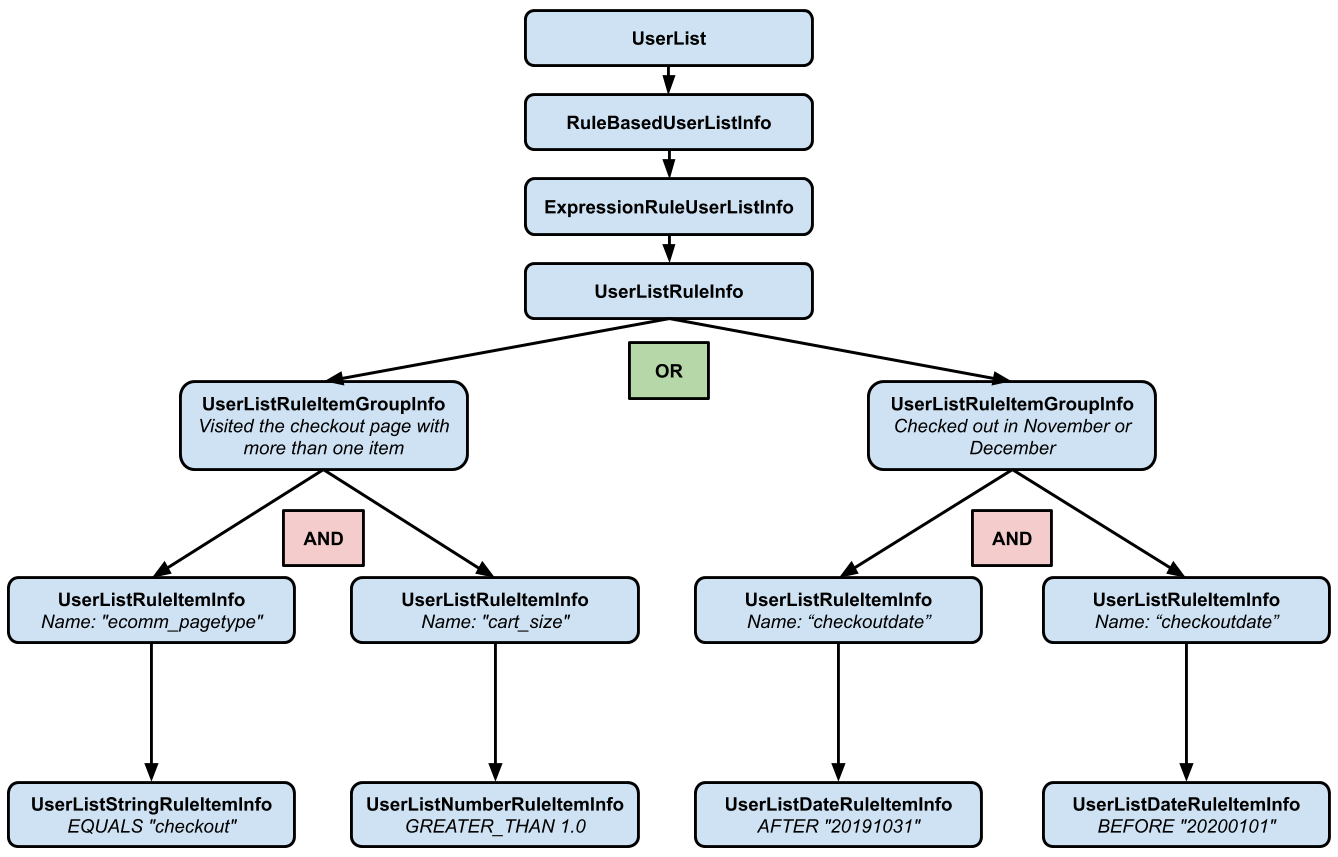मान लें कि आपकी एक साइट है, जहां आपने उपयोगकर्ताओं की इन विशेषताओं को कैप्चर करने के लिए, कई कस्टम रीमार्केटिंग टैग पैरामीटर कॉन्फ़िगर किए हैं:
event- आपकी साइट पर मौजूद पेज की कैटगरी. जैसे, चेकआउट, कार्ट वगैरह.cartsize- किसी उपयोगकर्ता के शॉपिंग कार्ट में मौजूद आइटम की संख्या.checkoutdate- वह तारीख जब उपयोगकर्ता ने चेक आउट किया. इस पैरामीटर को सिर्फ़ तब सेट करें, जब उपयोगकर्ता ने खरीदारी पूरी कर ली हो.
आपको उन उपयोगकर्ताओं को ज़्यादा इंप्रेशन दिखाने हैं जिन्होंने अपने शॉपिंग कार्ट में कई आइटम रखे हैं और चेकआउट की प्रोसेस शुरू की है. आपको उन उपयोगकर्ताओं को भी ढूंढना है जिन्होंने नवंबर और दिसंबर के दौरान खरीदारी की है, क्योंकि आपको उन महीनों में अपनी साइट पर बड़ी सेल करनी है.
उपयोगकर्ताओं के इस सेट के बारे में बताने के लिए, इनमें से किसी भी नियम का इस्तेमाल किया जा सकता है:
- वे उपयोगकर्ता जिन्होंने चेकआउट पेज पर विज़िट किया और जिनके कार्ट में एक से ज़्यादा आइटम थे.
- ऐसे उपयोगकर्ता जिन्होंने नवंबर या दिसंबर के महीने में चेक आउट किया.
अगर कोई उपयोगकर्ता पहली या दूसरी कैटगरी में आता है, तो आपको कुछ विज्ञापन ग्रुप या कैंपेन के लिए, अपनी बोलियों को 25% तक बढ़ाना है.
ऑब्जेक्ट
नियम पर आधारित उपयोगकर्ता सूची की संरचना देखें. नियम पर आधारित सूची को Google Ads API में rule_based_user_list के तौर पर दिखाया जाता है.
यहां दिए गए डायग्राम में दिखाया गया है कि इस इस्तेमाल के उदाहरण के लिए, rule_based_user_list कैसा दिखेगा.


